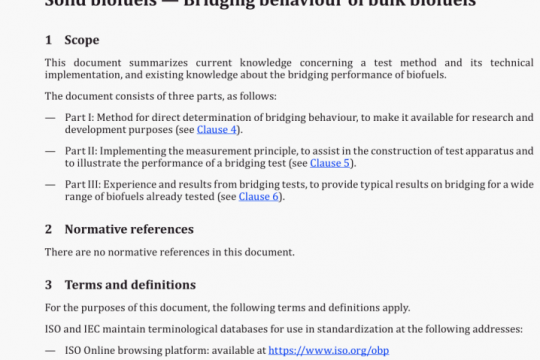ISO 23300-1 pdf free download
ISO 23300-1-2021 pdf free download.Railway infrastructure – Rail welding – Part 1: General requirements and test methods for rail welding.
6 Approval/homologation of welding processes
6.1 General
Initial approval/homologation tests shall be carried out for every application of each rail welding process. Approval/homologation tests are used to confirm the reliability of the welding process and do not reflect quality control in production. Approval/homologation tests shall be carried out for a particular rail profile and grade, using a specific welding machine or specific type of welding consumable material.
NOTE The series and sequence of tests for each welding process, together with the number of specimens for each test item, are specified in the subsequent parts of the ISO 23300 series.
The specification requirements of each approval/homologation test shall be provided to the contractor from the railway authority before conducting the test.
6.2 Non-destructive testing (NDT)
In this document, NDT methods include:
a) visual testing (VT);
b) ultrasonic testing (UT);
c) magnetic particle testing (MT);
d) dye penetrant testing (PT).
After the VT, further appropriate NDT methods shall be applied in accordance with the relevant annexes of this document and the subsequent parts of the ISO 23300 series, and shall be used to inspect the welded joint in finished condition.
The NDT methods for sectioned and full-size samples are dependent upon the welding process being used.
NOTE The NDT methods for sectioned and full-size samples are described In the subsequent parts of the ISO 23300 series.
6.3 Slow-bending test
The slow-bending test for a welded joint is a practical and efficient test method that can simply evaluate the performance of the welded joint on whether the load and the deflection satisfy the specified value. However, the original purpose of the test Is to force failure of the welded joint and to observe the existence or non-existence of weld defects on the fracture face.
In this test, two loading modes are applied as appropriate:
a) one with the rail head upwards in which tensile stress is applied to the rail foot;
b) one with the rail head downwards in which tensile stress is applied to the rail head.
Each slow-bending test shall also be continued until the load or deflection reaches the specified value or fracture occurs.
For applying the slow-bending test in which tensile stress is applied to the rail foot, the requirements and the test method given in AnnexA shall be followed.
For applying the slow-bending test in which tensile stress is applied to the rail head, the requirements and the Lest method given In Annex B shall be followed.
6.4 Past-the-post fatigue test
The straightness of the welded joint in finished condition shall not affect the execution of a past-the- post fatigue test.
The test sample shall be subject to NDT, which shall include VT and UT, MT or PT as appropriate. Only those samples that have been qualified by NDT can be used for the fatigue test.
The test shall be conducted in three-point or four-point bending with the rail foot in tension. Each test type is sufficient for approval.
The requirements for the three-point bending test and the test method given in Annex C shall be followed.
The requirements for the four-point bending test and the test method given in Annex D shall be followed.
6.5 Macro examination
Macro examination shall be performed to investigate the presence or absence of defects in the relevant sections, or on a fracture face following bend, fatigue or drop-hammer testing that is not identified as a surface breaking defect in the welded joint and to confirm that the appropriate heat input has been achieved. The macro structures depend on each welding process.
The macro examination described in Annex E shall be followed.
6.6 Micro examination
Micro examination shall be performed to investigate the presence or absence of an abnormal metallographic structure in the welded joint. The micro structures depend on each welding process.
The micro examination described in Annex F shall be followed.
6.7 Hardness test
A hardness test shall be performed to evaluate wear resistance and to confirm accordance with specification. The hardness values depend on each welding process.
The hardness test described in Annex G shall be followed.
6.8 Drop-hammer test (optional)
A railway authority may demand a drop-hammer test to assess the welded joint’s performance.
If applied, the drop-hammer test described in Annex H shall be followed.
6.9 Recording of defects
The details of weld defects shall be recorded.
The recording of defects described in Annex I shall be followed.
6.10 Test result reports
Test result reports shall contain, as a minimum, items in accordance with the relevant annexes and shall reference this document.ISO 23300-1 pdf download.




